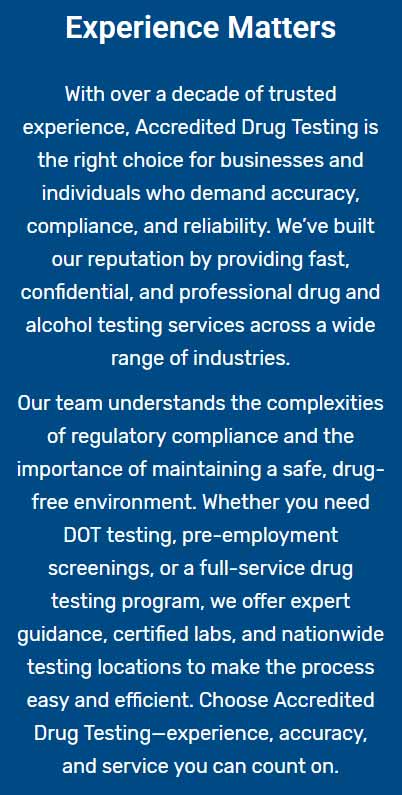What it is, How it works
Hair analysis is now recognized as an effective method for uncovering drug and alcohol consumption. Hair strands maintain a prolonged record of alcohol and drug biomarkers within the hair fiber as it grows. When the sample is taken near the scalp, it can offer roughly a 3-month detection timeframe for both alcohol and drugs. Hair collection is uncomplicated, somewhat resistant to tampering, and simple to transport.
A section measuring 1.5 inches of approximately 200 hair strands (the thickness of a #2 pencil) nearest the scalp yields 100mg of hair, which is the preferred amount for both screening and confirmation. For EtG, supplementary testing, and/or panels exceeding 10, 150mg is advised. We suggest using a jeweler’s scale for weighing the sample. In cases where head hair is unavailable, an equivalent amount of body hair can be taken. Head hair refers strictly to scalp hair, while body hair includes all other forms (facial, axillary, etc.).
Process Overview
The laboratory procedure for processing drug test outcomes comprises four primary steps: Accessioning, Screening, Extraction, and Confirmation.
Accessioning is concerned with the initial integration of a sample into laboratory records. This part involves verifying the sample's proper sealing and shipment, generating a unique LAN (Laboratory Accessioning Number), and completing any missing data entry from an electronic chain of custody system.
The Screening phase conduct an initial check for drugs of abuse. Despite being a cost-efficient method for eliminating drug use in most samples, confirmed screening is necessary for court admissibility. Any samples yielding a presumptively positive result during screening demand additional confirmation.
For presumptive positives detected in Screening, additional hair is extracted from the initial sample and readied for the Extraction phase. Here, drugs are separated from hair at lower concentrations compared to methodologies like urine or oral fluid, which makes hair testing more challenging.
GC/MS, GC/MS/MS, or LC/MS/MS methods are used for confirmation of any positive results from screening. All presumptive positive samples undergo necessary washing before confirmation. The entire testing process from Accessioning to Confirmation is assessed against both the CAP (College of American Pathologists) Hair criteria and ISO / IEC 17025 accreditation standards.
Advantages of hair drug testing:
- Extended detection period: Hair drug tests can reveal drug usage for as long as 90 days, in contrast to urine tests which have brief detection periods.
- Hard to manipulate: Cheating a hair drug test is quite challenging, enhancing the accuracy of results.
- Reveals use history: It depicts a drug use timeline over an extended period, rather than recent consumption.
Limitations:
- Cannot track recent usage: Drugs become detectable in hair after around 5-7 days.
- Higher costs: Hair drug tests tend to be costlier compared to other testing methods.
- Varied outcomes: Factors like hair color and personal differences in hair development can influence drug metabolite concentrations in hair samples.
Note: Although commonly referred to as "hair follicle tests", the examination actually focuses on the hair strand itself, not the follicle beneath the scalp.
Tamper-Resistant Testing Method
Hair follicle tests in Vollmar, CO, are renowned for being tamper-resistant. The risk of sample alteration is significantly reduced, ensuring reliable results.
- The method offers undeniable result integrity.
- It decreases the chances of manipulation, offering trustworthy findings.
This reliability makes it an invaluable tool in maintaining test integrity.
Convenient Nationwide Locations
With convenient nationwide testing locations, including Vollmar, CO, access to hair follicle tests is simple and hassle-free.
- Ensure quick and easy testing services.
- Avoid long-distance travel with local availability.
The extensive network of centers allows for efficient and accessible testing wherever you are.




